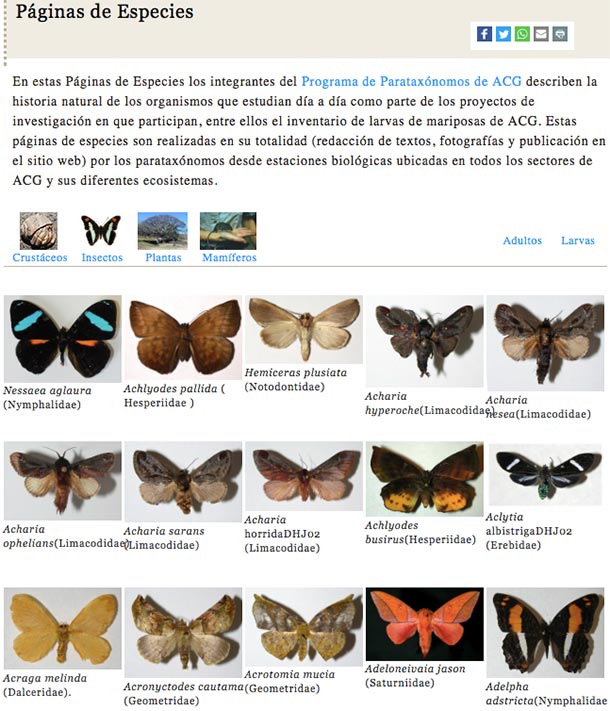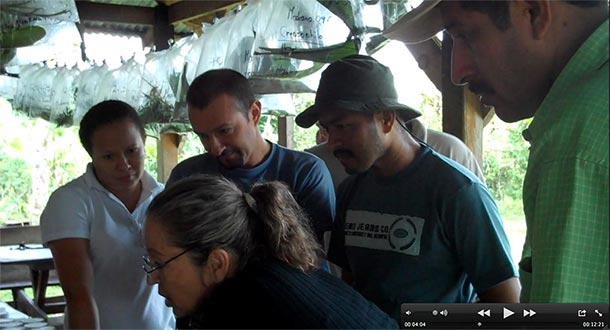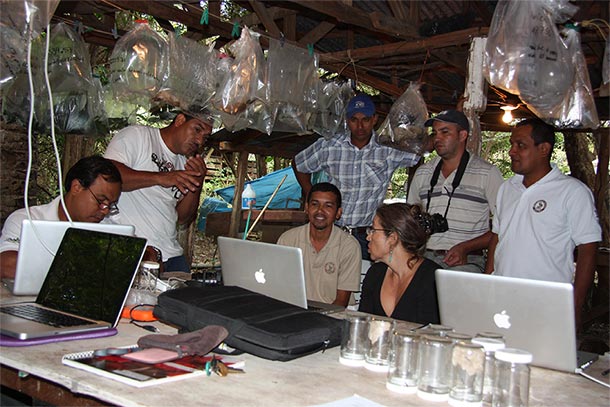The thirty four terrestrial parataxonomists and as of last year two new marine parataxonomists have been steadily building the library of biodiversity knowledge within the four ecosystems of ACG. Over 10,000 species have been collected and identified to date through the supply chain of rearing, photographing, and curating across twelve research stations and linking that to the international DNA barcoding system for unique barcode identification. However, a relatively new tool in this effort is the development of “species pages” to help educators, researchers, tourists and others to more easily access and identify the species they are looking at. Under the leadership and support of Luz Maria Romero Villalta, the ACG parataxonomists have expanded their skills to include writing and preparing on-line field guides to the many (and complex) species of moths and butterflies, and increasingly other types of species, that are found in ACG. In the last two years, 441 species pages have been published online along with descriptions about their habitat, food plants and parasites. All of these pages can be accessed at the formal ACG government website at: http://www.acguanacaste.ac.cr/paginas-de-especies
As Luz Maria has said: “The process has been very helpful, it has enriched the entire inventory of biodiversity, and allowed us to accumulate a large amount of valuable information. And to the surprise of some of the parataxonomists, this experience has allowed them to more fully realize their potential in terms of knowledge of the natural history of Lepidoptera, birds, and plants.”
To date the majority of species consist of four major families of Lepidoptera: Sphingidae (sphinx moths, hawk moths), Saturniidae, (large moths) Hesperiidae (skipper butterflies), and Nymphalidae (medium to large butterflies), but there are twenty more families represented on the site as well. In addition there are 20 pages of species from ten families of plants and two species pages from two families of birds.


